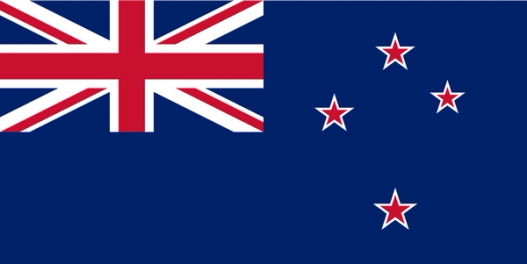Donate to Support Supercluster
Your support makes the Astronaut Database and Launch Tracker possible, and keeps all Supercluster content free.
SUPPORTSupercluster on Patreon
Your support makes the Astronaut Database and Launch Tracker possible, and keeps all Supercluster content free.
SUPPORTThis goes
to space
There and Back Again
Electron will deploy 34 payloads from commercial operators Alba Orbital, Astrix Astronautics, Aurora Propulsion Technologies, E-Space, Unseenlabs, and Swarm Technologies via global launch services provider Spaceflight Inc.
This launch is expected to bring the total number of satellites launched by Electron to 146.
Alba Orbital
A cluster of four pico-satellites will be deployed, including Alba Orbital’s own Unicorn-2 PocketQube satellites, as well as TRSI-2, TRSI-3, and MyRadar-1 satellites for Alba Orbital’s customers.
Astrix Astronautics
Astrix Astronautics will be deploying the “Copia” system - a high-performance power generation system for CubeSats that aims to improve on power restraints typically seen in small satellites.
Aurora Propulsion Technologies
The AuroraSat-1 also known as The Flying Object will deploy to low Earth orbit in a demonstration of the company’s proprietary propulsion devices and plasma brakes.
The CubeSat will validate it's water-based propellant and mobility control of its Resistojets that can assist CubeSats with detumbling capabilities and propulsion-based attitude control.
AuroraSat-1 will also test deployable Plasma Brakes which combine a micro-tether with charged particles in space, or ionospheric plasma, to generate significant amounts of drag to deorbit the spacecraft safely at the end of its life.
E-Space
E-Space’s payload consists of three demonstration satellites to validate the systems and technology for its sustainable satellite system.
Each of the satellites have small cross-sections, to decrease the risk of collision from the millions of untrackable space objects and will automatically de-orbit if any systems malfunction.
Eventually, the satellites will sacrificially capture and deorbit small debris to burn up on re-entry, setting a new standard in space environmental management.
Spaceflight Inc
Spaceflight Inc. has arranged for Rocket Lab to launch two stacks of SpaceBEEs for Internet-of-Things constellation operator, Swarm Technologies.
UNSEENLABS
BRO-6 is the sixth satellite of the Unseenlabs’ constellation, dedicated to the detection of radiofrequency signals such as any vessel at sea, even those whose cooperative beacon is turned off.
This dedicated mission will be Rocket Lab’s 26th Electron launch.
Rocket Lab names each Electron mission after a unique or quirky element of the flight. Past examples include "That's A Funny Looking Cactus" for odd looking cacti in New Mexico where one payload customer was located, and "Return To Sender" the first time a first stage was recovered for inspection and partial reuse.
The mission has been named ‘There and Back Again’ and will be the company's first attempt at a mid-air helicopter capture of the Electron launch vehicle.
Image Credit: Rocket Lab

On this
rocket
Electron (There And Back Again)
Meet the catchable and reusable version of Electron, Rocket Lab's purpose-built small satellite rocket.
And the first stage for Electron's 26th flight looks a little different from past rockets. This stage is covered in a thin, silver thermal protection system because this is the first Electron that Rocket Lab plans to catch mid-air with a helicopter as it parachutes down toward the Pacific Ocean!
This is all part of Rocket Lab's plan to increase its launch cadence by reusing Electron's first stage.
Electron's first flight on May 15, 2017, was named "It's a Test."
Since then, all Electron flights have received whimsical names that have something to do with the mission.
This flight is called "There And Back Again" in reference to the first stage's planned trip to space and back for recovery.
Picture: Electron. Credit: Rocket Lab

From this
launch site
LC-1A - Māhia Peninsula, New Zealand
Rocket Lab's Launch Complex 1A (LC-1A) on the Māhia Peninsula on New Zealand's North Island is part of the company's first launch site, with another under construction at the Mid-Atlantic Regional Spaceport on Wallops Island, Virginia.
An isolated location, the Māhia launch site hosted its first orbital launch attempt of Electron in May 2017 and its first successful orbital launch in January 2018.
Together with Rocket Lab's third launch pad in Virginia, their launch sites can support up to 132 Electron launch opportunities every year.
The Māhia location has two launch pads (LC-1A and LC-1B) and two separate integration hangers to permit simultaneous and protected processing of two payloads for flight at the same time.
LC-1A is the original pad at the Māhia site, with LC-1B launching its first mission in February 2022.
Photo: Rocket Lab

Booster
drops here
Sikorsky S-92 Helicopter - South Pacific Ocean, New Zealand
Meet the latest addition to Rocket Lab's growing recovery operations, Sikorsky S-92.
Rocket Lab will use a customized Sikorsky S-92 to catch the first stage of Electron as it parachutes back from launch.
About 1 hour before liftoff, the helicopter will move into the capture zone 280 kilometers off New Zealand’s coast to await the booster's arrival.
After the first stage deploys its drogue parachute at 13 km altitude, the main parachute will deploy at 6 km altitude to dramatically slow the stage down to just 10 meters per second, or 36 km per hour.
The Sikorsky S-92 helicopter will then attempt to grab the returning stage with a big hook.
Once the helicopter has its prize, it will transport the booster back to land so Rocket Lab can conduct a thorough inspection to assess its suitability for reuse.
Rocket Lab has conducted several successful helicopter captures with replica stages and successfully recovered Electron’s first stage from the ocean during the 16th, 20th, and 22nd missions.
Image: Electron recovery test. Credit: Rocket Lab

Know Before You Go
Rocket Lab's Launch Complex 1 on the Mahia Peninsula on New Zealand's North Island is the company's first of two launch pads, the other being under construction at the Mid-Atlantic Regional Spaceport on Wallops Island, Virginia.
An isolated location, the Mahia launch site hosted its first orbital launch of Electron in May 2017 and first successful orbital launch in January 2018.
The Mahia location has one launch pad (LC-1) and two separate intergration hangers to permit simultaneous and protected processing of two Electron missions' payloads for flight at the same time.
GET THE SUPERCLUSTER APP
THE SUPERCLUSTER PODCAST
A podcast exploring the amazing milestones that changed space history, the wildest ideas that drive our future, and every development in this new Golden Age of Space.
Donate to support
Your support makes the Astronaut Database and Launch Tracker possible, and keeps all Supercluster content free.
SupportCOPYRIGHT 2021 SUPERCLUSTER LLC


